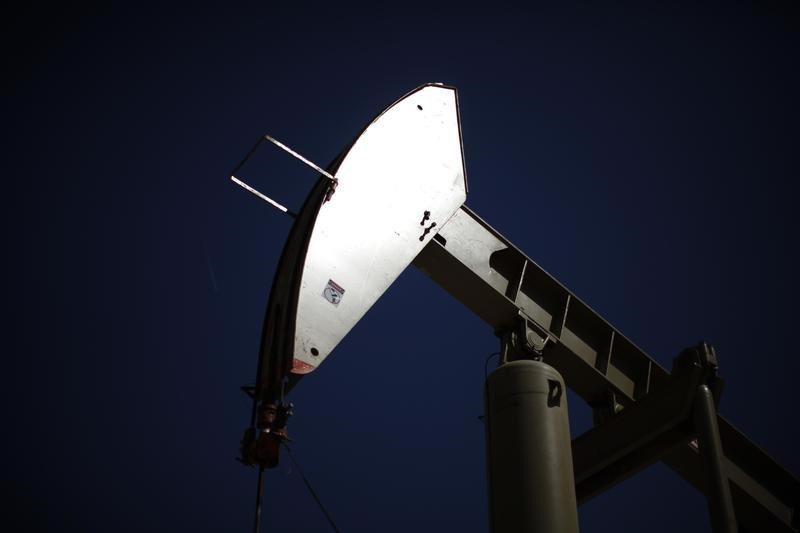* U.S. crude inventories rise unexpectedly
* Brent rally runs out of stream before $50 barrier
* Dollar rises as Fed keeps rate rise in play
* Supply outages support, but some Nigerian output returning (Previous SINGAPORE, updates prices, adds quotes)
By Alex Lawler
LONDON, May 19 (Reuters) - Oil fell below $48 a barrel on Thursday, pressured by a stronger dollar and as a surprise increase in U.S. inventories served as a reminder that supply remains ample despite unplanned outages.
Supply losses due to wildfires in Canada and attacks in Nigeria lent support, but Exxon Mobil (NYSE:XOM) is boosting production of Nigeria's largest crude stream Qua Iboe after pipeline damage forced it to slow output, traders said. crude LCOc1 was down $1.00 at $47.93 at 0841 GMT. It reached a 2016 high of $49.85 on Wednesday, only to close lower. U.S. crude CLc1 was down 92 cents at $47.27.
"The late sell-off we saw in the last half an hour of trading yesterday is being followed through this morning as hints from the Fed about a possible rate hike next month sent the dollar index soaring," said Tamas Varga of oil broker PVM.
Oil and other commodities came under pressure from the U.S. dollar, which firmed as the minutes of the Federal Reserve's latest policy meeting rekindled expectations for an interest rate increase. stronger dollar makes commodities denominated in the U.S. currency more expensive for holders of other currencies and tends to weigh on oil prices.
Brent's 2016 high hit on Wednesday was supported by the supply outages, but the bull run ran out of steam after weekly data showed an unexpected 1.31-million-barrel rise in U.S. crude inventories.
"We feel that markets have moved too high, too far, too soon," said BNP Paribas (PA:BNPP) in a report. "We still face a large inventory overhang and for the most part, the outstanding supply outages - Canada and Nigeria - are reversible."
Despite the outages and falling U.S. output as the near-halving of oil prices since mid-2014 curbs investment by shale drillers, OPEC production is at its highest in years thanks in part to higher Iranian exports. and non-members including Russia failed at an April 17 meeting to agree on an initiative to freeze output. OPEC meets on June 2 to set output policy and is not expected to decide on any measures to limit supplies.
<^^^^^^^^^^^^^^^^^^^^^^^^^^^^^^^^^^^^^^^^^^^^^^^^^^^^^^^^^^^ GRAPHIC on Asia's Iranian crude oil imports
http://graphics.thomsonreuters.com/iran-oil/index.html
^^^^^^^^^^^^^^^^^^^^^^^^^^^^^^^^^^^^^^^^^^^^^^^^^^^^^^^^^^^> (Additiona reporting by Keith Wallis and Henning Gloystein; editing by Jason Neely)
